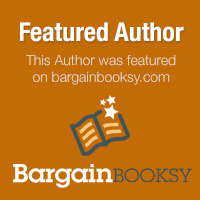Print vs. EBook
February 23, 2012
 There is much speculation about the future of the printed book format; however, rumors of the death of the traditional business model have been greatly exaggerated. An author considering self-publishing may wonder whether to initially publish in print or eReader format. While going digitally may be the most economical obviously you want to consider both to reach a maximum readership. Amazon eBook sales now exceed hardcover sales by a ratio of 1.43, and many of those sales are on the low end with downloads ranging from 25 to 99 cents. The New York Times reports half of the books on its best seller list are given away for free on Kindle. While eBooks publishing is a new frontier growing in increasing popularity the traditional format if far from extinct. There are still minions of readers who will resist the eReader craze choosing to stick with traditional books and bookstores.
There is much speculation about the future of the printed book format; however, rumors of the death of the traditional business model have been greatly exaggerated. An author considering self-publishing may wonder whether to initially publish in print or eReader format. While going digitally may be the most economical obviously you want to consider both to reach a maximum readership. Amazon eBook sales now exceed hardcover sales by a ratio of 1.43, and many of those sales are on the low end with downloads ranging from 25 to 99 cents. The New York Times reports half of the books on its best seller list are given away for free on Kindle. While eBooks publishing is a new frontier growing in increasing popularity the traditional format if far from extinct. There are still minions of readers who will resist the eReader craze choosing to stick with traditional books and bookstores.
Publishing is a resilient industry adapting to the new challenges of the 21st Century. It will not only survive the digital age but thrive. There are new evolving best sellers’ lists catering to eBooks alone like the The Kindle Best Seller List and both the Wall Street Journal and USAToday have revamped their book coverage with eBook best seller lists presenting publishers with new challenges. New book promotions no longer exclusively rely on securing media attention and popular print reviews. The internet has opened up a whole new world for book promoters.
New cheaper opportunities in eBook marketing rely on book blogs, book blog tours, book clubs, and online magazine reviewers. That’s not to say you should forego the print marketing business model. In fact, meeting and mingling with your readers with book store signings and library and book club readings remain the best way to build a readership — word of mouth is the best form of advertising. The independent publisher’s challenge is to create buzz around a new book.
Depending on preferences, some authors avoid public events while others thrive on the live audience. The internet offers the best of both worlds in reaching a real and virtual audience. The publishing industry has a history of meeting and overcoming challenges. Past threats include the flood of the cut rate dime store paperbacks, as well as the growth of lending libraries and book clubs selling inexpensive hardbacks. The challenges met with industry resistance and the industry managed to adapt and make the best of it meeting consumer demand. EBooks are yet another challenge.
The best writers take an active, entrepreneurial role in their book sales. Publishing is filled with success stories that began as self-publishing miracles. The independent publisher’s challenge is to mine the electronic frontier finding new ways to sell and market both print and eBooks.
Organizing the publishing entity
February 17, 2012
![]() Once you’ve written your masterpiece, and either hired an editor or used beta readers to perfect the manuscript, what’s next? If this is your first foray into self-publishing you should first determine how you plan to operate and establish your business structure. In considering what type of independent publisher you want to be, seek legal counsel, preferably an expert in literary matters. A good place to begin is with your local Small Business Administration, also often local college business schools offer clinics and assistance for fledgling entrepreneurs. Selecting a business entity is one of the most important decisions a business owner can make. Choosing the most favorable business structure will affect the protection of personal assets, taxation and a smooth continuation of the business upon change in ownership. There are three types of business structures to consider.
Once you’ve written your masterpiece, and either hired an editor or used beta readers to perfect the manuscript, what’s next? If this is your first foray into self-publishing you should first determine how you plan to operate and establish your business structure. In considering what type of independent publisher you want to be, seek legal counsel, preferably an expert in literary matters. A good place to begin is with your local Small Business Administration, also often local college business schools offer clinics and assistance for fledgling entrepreneurs. Selecting a business entity is one of the most important decisions a business owner can make. Choosing the most favorable business structure will affect the protection of personal assets, taxation and a smooth continuation of the business upon change in ownership. There are three types of business structures to consider.
Sole Proprietorship is usually the form in which most self publishers begin. The sole proprietor operates and controls his publishing venture alone. Profits and losses are considered part of your personal income. Funds can easily be transferred between personal and business accounts. Most entrepreneurs operate as sole proprietorships, but if your business takes off with let’s say an eBook with a millions in sales profit you might want to reconsider this business structure. Sole proprietors may have to depend on the owner’s personal credit rating to obtain business loans. In other instances, sole proprietors may end up using their personal savings to finance their business. If the individual owner of a sole proprietorship incurs any liability in the course of doing business, the creditors can look for recovery against the owner’s individual assets, such as a house or savings account. As your business grows and you take on more risk you might want to consider another structure.
Partnerships may be appropriate where friends, relatives, or a financial backers join in a venture and it becomes necessary to share in the profits and the losses. There are several types of partnerships, General, Limited, and Limited Liability. A general partnership is defined as the association of two or more persons to carry on as co-owners as a business for profit. Partners generally share control, gross returns, and property. Partners in a general partnership are jointly and severally liable for all the obligations arising from any wrongful act or omissions. Partnership like all relationships can get complicated and messy. A partnership agreement anticipates addressing possible disagreements and as such should be drafted by an attorney establishing the rights and liabilities of each partner. Partners have been known to overstep their prescribed boundaries in the ordinary course of business sometime incurring debts and liabilities without disclosure to the other partners. Partnerships can sometimes sour, and its best to choose a partner you can trust and knowing where you stand in a dissolution.
Corporations like partnerships come in different forms. Operating as a corporation offers protection to the directors, shareholders, and employees. As your business grows it would be in your best interest to transition into a corporation. Anyone dealing with a corporation and has a complaint against the business entity, be it from a contract or other losses, recovery is limited to whatever business assets exist. It insulates the principals, directors, employees and shareholders from personal liability. There are various forms of corporations which are distinguished by tax liability. Whether you adopt to operate as a Limited Liability Company or a Subchapter S Corporation there are related matters which should be explored with an attorney. Corporations are charge with more regulatory obligations.
There are numerous important issues to be considered in building a publishing business including licensing, regulations, the treatment of inventory, leases, contracts with vendors or customers, tax filings, intellectual property protection and employee issues. An attorney will aid in developing and reviewing your future business plans.
A Review of Ebony the Beloved by Hannah Spivey
February 13, 2012
 This is a story of the worst kind of childhood. Ebony while growing up in a dysfunctional household suffers physical and verbal abuse by her parents. Reduced to a pathetic creature she suffers similar abuse in school. A school official discovers her plight and rescues Ebony taking her into a caring home. One would think Ebony would be humbled and grateful finally being showered with love and attentive care. But poor Ebony can’t seem to handle her new life. Having been deprived of a healthy family relationship with low self esteem her carnal desires leads her back into trouble. It seems being deprived of the normal joys of growing up the teenager develops a fast feisty and frisky attitude. She’s wears stylish clothes, gets a perm, and discovers lipstick and jewelry. Suddenly inexperienced in life she thinks she grown.
This is a story of the worst kind of childhood. Ebony while growing up in a dysfunctional household suffers physical and verbal abuse by her parents. Reduced to a pathetic creature she suffers similar abuse in school. A school official discovers her plight and rescues Ebony taking her into a caring home. One would think Ebony would be humbled and grateful finally being showered with love and attentive care. But poor Ebony can’t seem to handle her new life. Having been deprived of a healthy family relationship with low self esteem her carnal desires leads her back into trouble. It seems being deprived of the normal joys of growing up the teenager develops a fast feisty and frisky attitude. She’s wears stylish clothes, gets a perm, and discovers lipstick and jewelry. Suddenly inexperienced in life she thinks she grown.
Ebony rejects the warming advice of her care taker and becomes involved with an older man. A wealthy pop star, Desmond is handsome and charming with a South Beach mansion. He sweeps the young girl off her feet and into his inescapable clutches. Desmond proves not to be the man she thought. Oblivious to reasons why an older man would be interested in an under age girl she believes it’s only natural because of her desirable beauty. After a series of clandestine meetings Ebony finds herself snagged in another dysfunctional relationship. Held against her will she’s reduced to a sex slave.
The story has an interesting twist at first you feel sympathy for poor Ebony, but that sympathy is quickly lost as the story advances. Initially Ebony is a victim of her circumstances of which she had no control, but when her physical appearance improves that downtrodden beaten lack of self esteem takes an about face. When Ebony is left to her own devices she becomes a victim of her own making. But there is growth, the beaten down trodden girl finally finds the wherewithal to fight back. Suddenly she reaches the tipping point transformed with a new found strength no longer willing to take the abuse she had long suffered from her parents and others.
Ebony the Beloved is an interesting read which at times forces the reader to suspend belief although stories of sex slaves and abuse are by there very nature despicable and unbelievable. At times preachy it took me awhile to grow into the story I believe because the author failed to adhere to the cardinal rule of fiction i.e. show don’t tell, nevertheless, overall the novel comes to a satisfying conclusion. 4 stars
Self-Publishing Services – Prix Fixe or À La Carte
February 10, 2012
![]() I’m neither fan of Print On Demand nor Self-Publishing companies, but prefer a more hands-on approach. To be fair I’ll address each. It comes down to cost and control. Personally I believe such entities are more interested in profiting and promoting their interest over the author’s often leaving many aspirants at a loss and bitter. Self-publishing is a business and everything you do to print and promote your book comes at a cost. Your goals should be to maximize your position and profit. Self-publishing companies and P.O.D. compete at cross purposes with writers. I find greater value and self satisfaction in the do it yourself route starting from scratch to finish, moreover you pay for what you get.
I’m neither fan of Print On Demand nor Self-Publishing companies, but prefer a more hands-on approach. To be fair I’ll address each. It comes down to cost and control. Personally I believe such entities are more interested in profiting and promoting their interest over the author’s often leaving many aspirants at a loss and bitter. Self-publishing is a business and everything you do to print and promote your book comes at a cost. Your goals should be to maximize your position and profit. Self-publishing companies and P.O.D. compete at cross purposes with writers. I find greater value and self satisfaction in the do it yourself route starting from scratch to finish, moreover you pay for what you get.
When I set out to self-publish with an eye on costs, exploiting publishing rights, and the bottom line I determined P.O.D. wasn’t for me. Wikipedia gives a concise explanation of the P.O.D. business model explaining it as a printing technology and business process in which new copies of a book (or other document) are not printed until an order has been received (which means books can be printed one at a time). While the unit price of each physical copy printed is higher than with offset printing, the average cost is lower for very small print runs, because setup costs are much higher for offset printing.
P.O.D. has other business benefits besides lower costs (for small runs):
- Technical set-up is usually quicker than for offset printing.
- Large inventories of a book or print material do not need to be kept in stock, reducing storage, handling costs, and inventory accounting costs.
- There is little or no waste from unsold products.
These advantages reduce the risks associated with publishing books and prints and can lead to increased choice for consumers. However, the reduced risks for the publisher can also mean that quality control is less rigorous than usual. Some P.O.D. Players are focused on serving this author segment. Their offerings are tailored to disintermediate classic publishers (à la Penguin, McGraw Hill). For authors who wish to design and promote their work themselves, P.O.D. companies focus on the low-service and low-cost. For authors, the potential benefits of P.O.D. publishing are several. They include editorial independence, speed to market, ability to revise content, and greater share of royalties kept compared with traditional publishing. Science Fiction and Fantasy Writers of America takes a more comprehensive view on the pros and cons of P.O.D. citing three considerations:
- Control. With true self-publishing, the writer controls all aspects of the publishing process, from cover art to print style to pricing. With P.O.D. services, choice is typically limited to the package of services the publisher offers.
- Revenue. With true self-publishing, the writer keeps all proceeds from sales. With P.O.D. services, the service keeps the lion’s share of sales proceeds to offset printing costs, and pays the author a percentage–either a percentage of income (a royalty) or a percentage of profit. Basically, you’re paying twice: once upfront, and once with each book produced and sold.
- Rights. With true self-publishing, all rights remain with the writer, who has full ownership of his/her books, including the ISBN number. With most P.O.D. services, the P.O.D. service owns the ISBN, and has a limited claim on digital and/or electronic publishing rights.
Self-Publishing companies are often distinguished from vanity publishing, and here again, it goes to the issue of control. A common complaint among authors using self publishing services is the loss of first rights, copyrights, cover design rights and subsidiary rights. What writer wants to launch a career locked in a contract dispute? And why pay another to rip you off? If you’re going to use a self-publishing service please do your research, some are better than others. Mark Levine’s The Fine Print of Self-Publishing introduces 45 Self-Publishing services analyzing each with their ranking in the industry. The idea of a DIY service strikes me as oxymoronic when you’re paying a service to do all the footwork. Filing copyright registration, ordering ISBN numbers and UPC barcode, selecting a graphic artist or cover and book designer as well as choosing a marketing and promotion strategy are some of the fee for services offered. Not every self publishing story is a success story but it pays to step into this business with you eyes wide open. The obstacles to going it alone can be herculean, but you do have the freedom to judiciously and economically contract out some of those tasks. Sometimes an à la carte menu is better than prix fixe.
Self-Publisher: To Be or Not To Be
February 3, 2012
Self-publishers, also known as independent publishers have leveled the playing field. The day of the joint media/publishing conglomerates with their teams of agents and editors singularly controlling publishing success is over. The internet with a certain ease now allows writers to publish, promote. and sell their books directly to the public. That’s not to say there are no disadvantages to self-publishing. There is the stigma perpetuated by traditional publishing interests aided by ignorant and careless authors.
Author Gloria Mallette in the February 2012 Writer’s Magazine tells of her self-publishing success after years of rejection. She self-published Shades of Jade, and sold 13,000 copies in 2001. Random House noticed her success and wanting a piece of the action reached out while she was feeling overwhelmed with the time consuming self-publishing process. When asked about the change back to self-publishing she explained after publishing 2 books with Random House and 4 books with Kensington Books she returned to self-publishing because Kensington wanted her to write erotica which she refused to do.
There are numerous best seller success stories. Among the advantages of independent publishing control is ranked as number one. Many prefer total control and time becomes a factor while a traditional publishing contract may take anywhere from 18-24 months before the title is in print. The question is whether you’re willing to take on that responsibility specifically the costs. A self publisher is responsible for all cost related to production and promotion, and there are no substantial advances commonly offered by traditional publishing houses. But the good thing is you don’t have to worry about not earning out your advance or being dropped without an option for another book. Incidentally 70-80% of traditionally published authors fail to earn out their advance. An independent publisher controls his own royalties, properties, and operating costs.
Beware, the greatest pitfall is the loss of objectivity. It is absolutely imperative the outside publisher seek outside editorial and business advice. This can often be provided through a self publishing company or the self reliant may prefer to seek out their own team of professional consultants for expert advice on editing, book design, promotional and legal matters. Three reference guides helped me through the process: Peter Bowerman’s The Well-Fed Self-Publisher, How to Turn One Book into a Full-Time Living, and Marilyn Ross’s The Complete Guide to Self-Publishing.
Make no mistake about it, publishing is a business and you would do well to appreciate it as such. There is a lot to learn, marketing, publicity, technology, legal and industry regulations. A professional writer is a very small business of one person; a solo trader in literary ideas. Those who are not businesslike are unlikely to survive. Competition in the market is stiff and your product should be of the highest quality. The learning curb is steep, but you don’t have to go it alone. A great deal of support can be found throughout the industry. National associations like the Indpendent Book Publishers Association and the regional Mid-Atlantic Independent Publishers Association offer marketing support and educational resources.
If you would rather just write and not be bothered with business details then by all means continue writing and querying agents sooner or later you’ll get that break. It will more likely be later, the ebook and internet have upended traditional publishing with increased competition and publishers are less likely to gamble on new writers unable to prove their profitability and ability to garner a readership. Alternatively, if you want to write and run your own business you’ll no doubt embrace the challenges of self publishing. So roll up your sleeves, there’s work to be done.




